Nicolas Boulanger-Lewandowski
Universite de Montreal
Theano: A Python framework for fast computation of mathematical expressions
May 09, 2016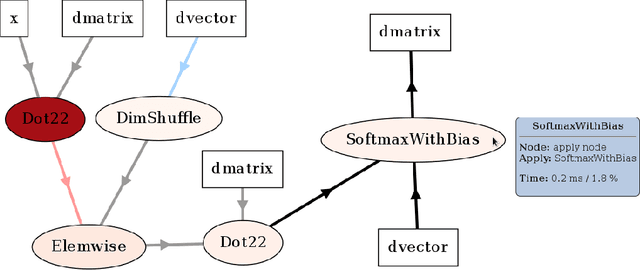
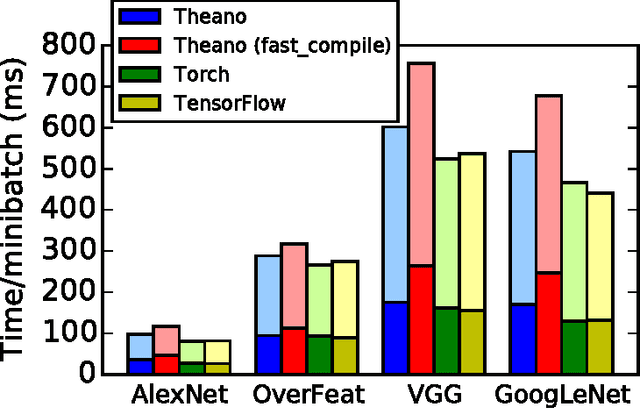
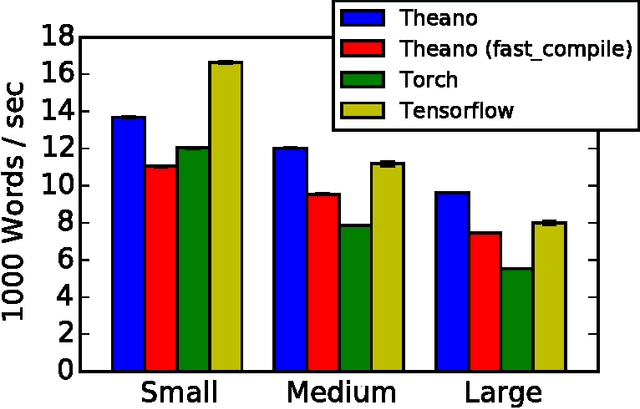
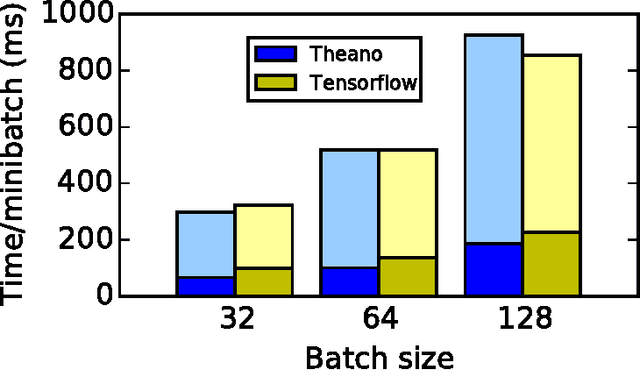
Abstract:Theano is a Python library that allows to define, optimize, and evaluate mathematical expressions involving multi-dimensional arrays efficiently. Since its introduction, it has been one of the most used CPU and GPU mathematical compilers - especially in the machine learning community - and has shown steady performance improvements. Theano is being actively and continuously developed since 2008, multiple frameworks have been built on top of it and it has been used to produce many state-of-the-art machine learning models. The present article is structured as follows. Section I provides an overview of the Theano software and its community. Section II presents the principal features of Theano and how to use them, and compares them with other similar projects. Section III focuses on recently-introduced functionalities and improvements. Section IV compares the performance of Theano against Torch7 and TensorFlow on several machine learning models. Section V discusses current limitations of Theano and potential ways of improving it.
EmoNets: Multimodal deep learning approaches for emotion recognition in video
Mar 30, 2015
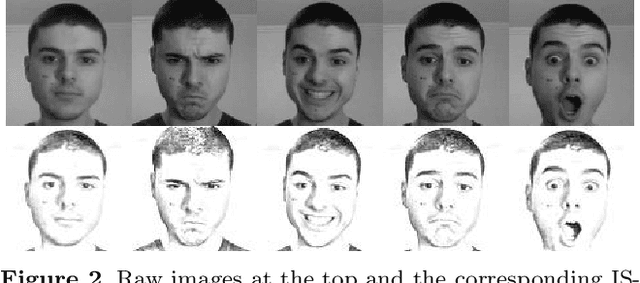

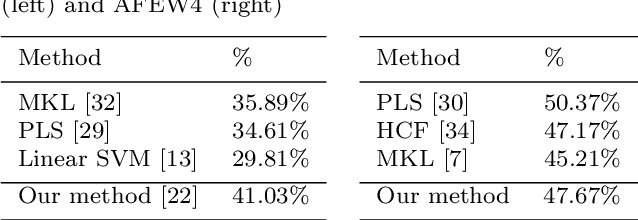
Abstract:The task of the emotion recognition in the wild (EmotiW) Challenge is to assign one of seven emotions to short video clips extracted from Hollywood style movies. The videos depict acted-out emotions under realistic conditions with a large degree of variation in attributes such as pose and illumination, making it worthwhile to explore approaches which consider combinations of features from multiple modalities for label assignment. In this paper we present our approach to learning several specialist models using deep learning techniques, each focusing on one modality. Among these are a convolutional neural network, focusing on capturing visual information in detected faces, a deep belief net focusing on the representation of the audio stream, a K-Means based "bag-of-mouths" model, which extracts visual features around the mouth region and a relational autoencoder, which addresses spatio-temporal aspects of videos. We explore multiple methods for the combination of cues from these modalities into one common classifier. This achieves a considerably greater accuracy than predictions from our strongest single-modality classifier. Our method was the winning submission in the 2013 EmotiW challenge and achieved a test set accuracy of 47.67% on the 2014 dataset.
A Hybrid Recurrent Neural Network For Music Transcription
Nov 06, 2014


Abstract:We investigate the problem of incorporating higher-level symbolic score-like information into Automatic Music Transcription (AMT) systems to improve their performance. We use recurrent neural networks (RNNs) and their variants as music language models (MLMs) and present a generative architecture for combining these models with predictions from a frame level acoustic classifier. We also compare different neural network architectures for acoustic modeling. The proposed model computes a distribution over possible output sequences given the acoustic input signal and we present an algorithm for performing a global search for good candidate transcriptions. The performance of the proposed model is evaluated on piano music from the MAPS dataset and we observe that the proposed model consistently outperforms existing transcription methods.
Advances in Optimizing Recurrent Networks
Dec 14, 2012

Abstract:After a more than decade-long period of relatively little research activity in the area of recurrent neural networks, several new developments will be reviewed here that have allowed substantial progress both in understanding and in technical solutions towards more efficient training of recurrent networks. These advances have been motivated by and related to the optimization issues surrounding deep learning. Although recurrent networks are extremely powerful in what they can in principle represent in terms of modelling sequences,their training is plagued by two aspects of the same issue regarding the learning of long-term dependencies. Experiments reported here evaluate the use of clipping gradients, spanning longer time ranges with leaky integration, advanced momentum techniques, using more powerful output probability models, and encouraging sparser gradients to help symmetry breaking and credit assignment. The experiments are performed on text and music data and show off the combined effects of these techniques in generally improving both training and test error.
High-dimensional sequence transduction
Dec 09, 2012



Abstract:We investigate the problem of transforming an input sequence into a high-dimensional output sequence in order to transcribe polyphonic audio music into symbolic notation. We introduce a probabilistic model based on a recurrent neural network that is able to learn realistic output distributions given the input and we devise an efficient algorithm to search for the global mode of that distribution. The resulting method produces musically plausible transcriptions even under high levels of noise and drastically outperforms previous state-of-the-art approaches on five datasets of synthesized sounds and real recordings, approximately halving the test error rate.
Modeling Temporal Dependencies in High-Dimensional Sequences: Application to Polyphonic Music Generation and Transcription
Jun 27, 2012



Abstract:We investigate the problem of modeling symbolic sequences of polyphonic music in a completely general piano-roll representation. We introduce a probabilistic model based on distribution estimators conditioned on a recurrent neural network that is able to discover temporal dependencies in high-dimensional sequences. Our approach outperforms many traditional models of polyphonic music on a variety of realistic datasets. We show how our musical language model can serve as a symbolic prior to improve the accuracy of polyphonic transcription.
Deep Self-Taught Learning for Handwritten Character Recognition
Sep 18, 2010



Abstract:Recent theoretical and empirical work in statistical machine learning has demonstrated the importance of learning algorithms for deep architectures, i.e., function classes obtained by composing multiple non-linear transformations. Self-taught learning (exploiting unlabeled examples or examples from other distributions) has already been applied to deep learners, but mostly to show the advantage of unlabeled examples. Here we explore the advantage brought by {\em out-of-distribution examples}. For this purpose we developed a powerful generator of stochastic variations and noise processes for character images, including not only affine transformations but also slant, local elastic deformations, changes in thickness, background images, grey level changes, contrast, occlusion, and various types of noise. The out-of-distribution examples are obtained from these highly distorted images or by including examples of object classes different from those in the target test set. We show that {\em deep learners benefit more from out-of-distribution examples than a corresponding shallow learner}, at least in the area of handwritten character recognition. In fact, we show that they beat previously published results and reach human-level performance on both handwritten digit classification and 62-class handwritten character recognition.
 Add to Chrome
Add to Chrome Add to Firefox
Add to Firefox Add to Edge
Add to Edge